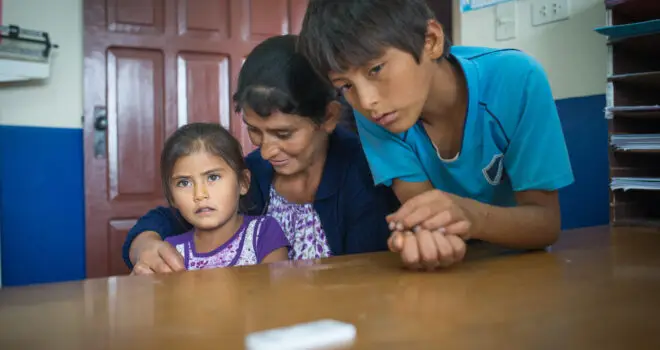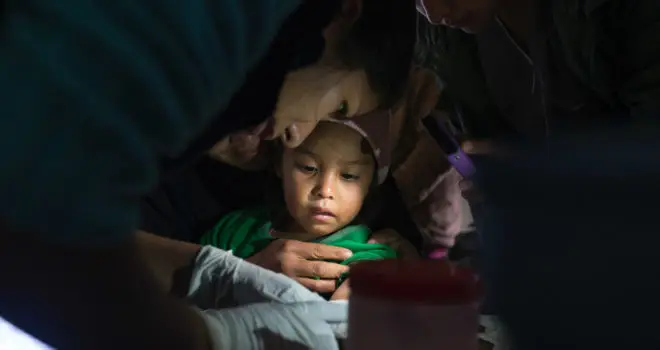First discovered more than 100 years ago, Chagas disease continues to affect more than six million people worldwide and is one of the most prevalent public health problems in Latin America and, increasingly, on a global scale. In the last decades, migratory patterns have spread the disease to areas where it was previously unknown, including the United States of America (USA), Europe and the Western Pacific region. With an estimated 75 million individuals at risk of infection, Chagas disease is becoming a global health challenge with significant social and economic burdens for the people affected by it.
Chagas disease is often referred to as a “silent and silenced disease” because it can show no symptoms, and it affects the most neglected populations in the world. Often, people living with Chagas disease have no access to healthcare, nor a political voice. “Together with our partners, scientific societies, foundations, patient organisations and the World Health Organization, we can reach out to all these different decision-makers to make sure that they invest, not only in diagnosis and treatment but also in innovation. We have to continue to better understand the disease and where we can find better solutions to manage it”, says Prof Fausto Pinto, WHF President.
In “Voices of Chagas: a disease that knows no borders”, the World Heart Federation amplifies the voice of the people affected by Chagas and those acting to reduce its burden in a conversational documentary-style video that travels across different countries.
“Chagas was a disease whose paradigm meant that it was a problem for Latin America. The United States, Canada, Europe and even countries as far away as Japan have reported cases of Chagas disease”, says Prof Daniel Piñeiro, WHF President-Elect.
Chagas disease is mainly transmitted by triatomine bugs or ‘kissing bugs’, which mainly occur in Latin America and the southern USA. In other countries, Chagas disease is not commonly transmitted by kissing bugs, but by blood transfusions, organ transplants or from mother to child. Marilin Bruno de Sartorio never imagined she could have Chagas because she had never been informed about the disease in her home country, Bolivia. It wasn’t until she moved to Switzerland and doctors checked her children as part of their routine analysis that they found out both children and mother had Chagas. “I felt responsible for having transmitted such a deadly disease to them”, Marilin says.
José Trigo comes from Bolivia and has been living in the United States for 32 years. Doctors could not find the reason behind his heart problems: “They told me they didn’t know why my heart was so weak. Time went by and they sent me to do an echocardiogram. By coincidence, the doctor who did the echocardiogram knew what a heart looked like with the problem I had. She said: ‘this is Chagas’”. By the time José received his diagnosis, his heart was already severely damaged.
About Chagas disease
Chagas disease, also known as American trypanosomiasis, is a neglected tropical disease caused by a group of parasites called Trypanosoma cruzi. The parasites can be found in blood-sucking triatomine bugs, also known as ‘kissing bugs’ (or vinchuca, barbeiro, pito, chinche, chipo in different Latin American countries), which typically live in the wall or roof cracks of poorly constructed homes made of materials such as mud, straw and palm thatch. Once entirely confined to the continental part of Latin America, in the last decades Chagas has been increasingly detected in the United States of America, Canada, many countries in Europe and some countries in Africa, the Middle East and the Western Pacific.
People affected by Chagas disease may not show any symptoms during the course of their lives. However, in about 20-30% of people, the disease progresses, mainly affecting the heart or gastro-intestinal organs. This occurs 10 to 20 years after the initial infection. The disease can cause enlargement of the heart muscle, leading to heart failure. Other common problems are arrhythmias and sudden cardiac arrest. Around 12,000 people die every year due to complications from Chagas disease, with only 1 in 10 being diagnosed. Of these, only a small percentage receive treatment.
WHF-IASC Roadmap for Chagas Disease
The World Heart Federation and Inter-American Society of Cardiology Roadmap on Chagas disease is an essential guiding document for anyone involved in the planning, development and implementation of interventions to eliminate the disease. Learn more about our Roadmap on Chagas disease here.


